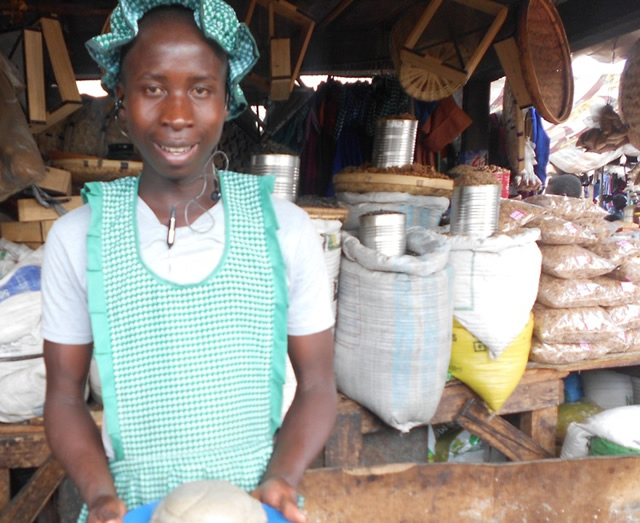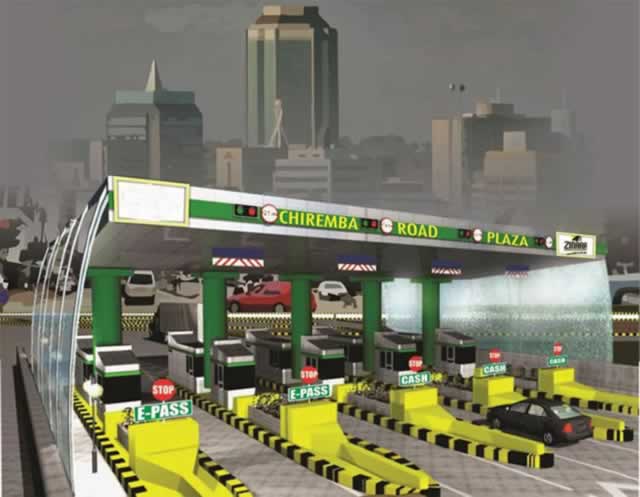Urban farming carries the day

Charles Dhewa Review Correspondent
Harare has quietly become a source of agricultural produce to rival the traditional farming areas, an indication signifying a rapid growth in urban agriculture.
In the past few years, urban agriculture has assumed a new image from small vegetable gardens for household consumption (fresh vegetables meeting specific household tastes and requirements) to a strong shoulder for urban household food security and source of income.
Due to their location, most urban centres tend to have high rainfall. In this direction, most urban agriculture plots have become rain-fed enterprises where maize is grown to supplement individual level food security. This has also seen an increase in processing plants such as grinding mills and maize roasting stalls in urban areas.
Urban horticulture is also generating subsistence income. Transporting vegetables from distant areas like Mutoko and Mahusekwa is becoming costly for most farmers. Urban vegetable production is filling this gap. A number of rural farmers are shifting to high value low volume commodities which are cheaper to transport. These horticulture commodities with a longer shelf life include butternuts, cucumbers, chillies and peppers.
Urban maize production has somehow controlled the price of maize meal. Some households can now grow enough maize to last them a whole year and this means they no longer buy maize meal. The price of meat has also been subdued as more urban households go into animal husbandry. Chickens, rabbits, turkeys, and quails are some of the animals being reared for subsistence and commercial production.
Agricultural produce from urban areas satisfies local residential markets as well as caterers who prepare food at business centres like Mereki, Gazaland and Mbare. Vegetables, meat and eggs from within Harare come to Mbare market where they compete with what is coming from Mutoko, Murewa and other areas.
Urban youth who have never lived in traditional farming areas are developing a passion for agriculture as they see potential for income generation through urban agriculture. An increase in urban poverty has also driven the growth of urban agriculture.
Harare and other cities are threatening urban agriculture – presenting a trade-off between residential areas and food production. There is need to recognise the role of technologies like drip kits which can use available water in smaller pieces of land. This can be buttressed with water harvesting and drilling of boreholes for irrigation. However, use of chemicals and pesticides should be controlled as they threaten water sources.
Competition between urban
commodity supplies and other provinces
As shown by the graph, during the month of August 2015, urban farming in Harare accounted for 13,96 percent of commodities supplied and income, behind Manicaland and Mashonaland Central respectively.
Agro-processing
Since urban areas tend to have reliable power supplies than rural areas, there are numerous opportunities for value addition activities such as vegetable drying and processing fruits into a wide range of juices.
Informal food caterers as an extension of rural and urban
informal agriculture market
Another industry that has quietly picked up alongside urban farming and the growth of informal agriculture markets is the mobile catering business. While competition seems to be intense between fast food chains and established restaurants which serve local food, mobile caterers have become a distinct category.
In almost all urban centres and rural business centres, there is a proliferation of people (mostly women) providing catering services to the expanding informal industry.
The mobile caterers buy huge amounts of vegetables, eggs, chickens, beef and mealie–meal on a daily basis. Collectively, food caterers take huge volumes of produce from the people’s market and thus, avert losses of vegetables which farmers would throw away due to market failure. They have cultivated niches in the informal sector where business has migrated to.
Caterers have established themselves and can estimate their food requirements and can easily meet 60 percent of their orders. It is easy for them to use resources properly since they know how many plates to prepare and for who.
They understand their customers to the extent of having three to five types of relish like free range chicken, muboora, nyevhe, etc.
The relationship between caterers and informal traders have evolved such that some transactions can be done without money. For instance, they can collect vegetables from traders in the morning on credit, prepare food for traders and other customers then settle outstanding bills at the end of the day.
The caterers also create employment. At each food stall there can be three people – one cooking, the other saving while another will be cleaning dishes. They also stimulate production and value addition. Their work has become a market option for agricultural produce which would otherwise rot.
People who can offer their services at catering services are paid through food rations as well as some little income. With proper support of such industries, vulnerable households are supported.
How informal caterers can be nutrition ambassadors
At least 30 percent of the urban population eat food from informal caterers daily. Tailoring nutrition messages correctly via these actors will trigger an amazing impact. Catering should be promoted as an extension of value addition because these people provide ready to eat food daily. Efforts to promote knowledge on nutrition can target these caterers.
If properly trained, these women can go back and transfer knowledge to other women in high density areas and through their clubs. Promoting this idea in urban markets can result in knowledge travelling quickly to rural areas. This will be another way for stimulating demand for nutritional knowledge.
Women are the best knowledge brokers and if you create awareness among them, the knowledge will easily filter to their peers in rural areas.
At the moment, there is enough awareness on the benefits of traditional vegetables like nyevhe and muboora among urban caterers because they interface with many consumers whose demand they now know.
Unfortunately, such knowledge is not adequately filtering to rural women who produce indigenous vegetables. As a result they continue ignoring these vegetables and showering most of the attention to field crops and hybrids.
Major customers for mobile food caterers include traders, transporters, farmers and travellers who pass through busy long distance bus station such as Mbare in Harare, Sakubva in Mutare, Kudzanayi in Gweru and Renkini in Bulawayo. The caterers have established their niche markets and are flexible in modes of payment.
By mastering their niche markets, the caterers ensure there are no food left-overs which can end up harming consumers. Everything cooked is consumed while fresh.
They are very particular about their budgets and that is why they spend the whole day cooking as per demand in smaller quantities unlike in big restaurants and hotels where food can be prepared ahead of time and wait for consumers rather than consumers waiting for their food.
In the mobile catering business, orders are taken from clients and food is prepared accordingly. Since the caterers are close to a wide range of vegetables such as tomatoes, fresh peppers and peas, they do not use food additives which are an option for those without fresh tomatoes. It is when additives are exposed to the sun that cases of food poisoning emerge.
There are no such cases among informal caterers which means they are doing things properly.
Knowledge sharing through food
A lot of knowledge exchange happens through informal catering services. Caterers have time to explain nutritional benefits of particular vegetables and a combination of relishes unlike in restaurants where you are just saved food by waiters most of whom cannot explain the nutritional benefits of what they are serving customers.
The whole process of preparing and selling food through informal catering is a knowledge sharing pathway. Types of food from different areas can be prepared – small grains, mowa, madhumbe, nyevhe and others which do not grow in other parts of the country.
Relationships are also strengthened through totems and places of origin. Someone can just say “I want to eat from Chihera because I am Mhofu and this means she my sister”.
Such relationships keep informal businesses going, leading to sustenance and can’t be under-estimated.
What can the formal education system learn from this?
Most of these informal caterers do not have backgrounds of technical subjects like food and nutrition that are taught in formal schools. Rather than continue preparing school leavers majoring in food science and hospitality to work in hotels, we have to equip them with appropriate skills for producing food that is eaten by the majority – things like five different ways of preparing sadza rezviyo can be learnt from the informal caterers in the informal market.
Hospitality courses which target hotels are missing knowledge from the people’s market. Youth programmes should target informal cooking services which are serving millions on a daily basis. All our girl children will not end up in salons when there is a whole food market waiting for them.
Charles Dhewa is a proactive knowledge management specialist and chief executive officer of Knowledge Transfer Africa (Pvt) whose flagship eMKambo has a presence in more than 20 agricultural markets in Zimbabwe. Feedback: [email protected] +263 774 430 309









Comments